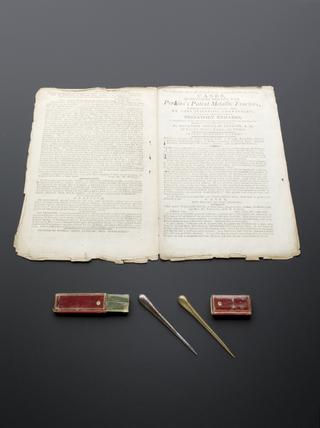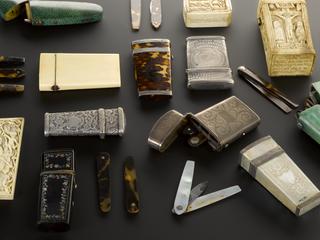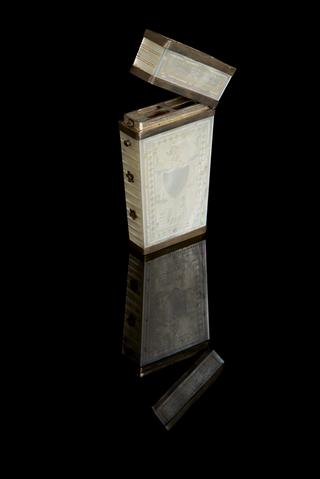




Brass automatic lancet of unusual mechanical type, in leather covered case, by Simpson, London, 1822-1863, located no. 55, The Strand
Lancets were used in bloodletting – a practice once carried out to treat a wide range of diseases and medical conditions. This automatic type of lancet was invented in the early 1800s and works by the blade being swiftly released to cut into a vein by means of a spring mechanism. The skill and experience of the operator was vital in determining the depth of the cut.
The main body of the lancet is made of brass, but the double-sided blade is made of a stronger, finer metal. The lancet is held within a purpose-made leather carrying case. This example was made by Simpson, a surgical instrument maker based in London.
Details
- Category:
- Therapeutics
- Collection:
- Sir Henry Wellcome's Museum Collection
- Object Number:
- A173220
- Measurements:
-
overall: 38 mm x 70 mm x 35 mm, .09kg
lancet: 31 mm x 58 mm x 26 mm, .07kg
- type:
- automatic lancet
- credit:
- Glendining


